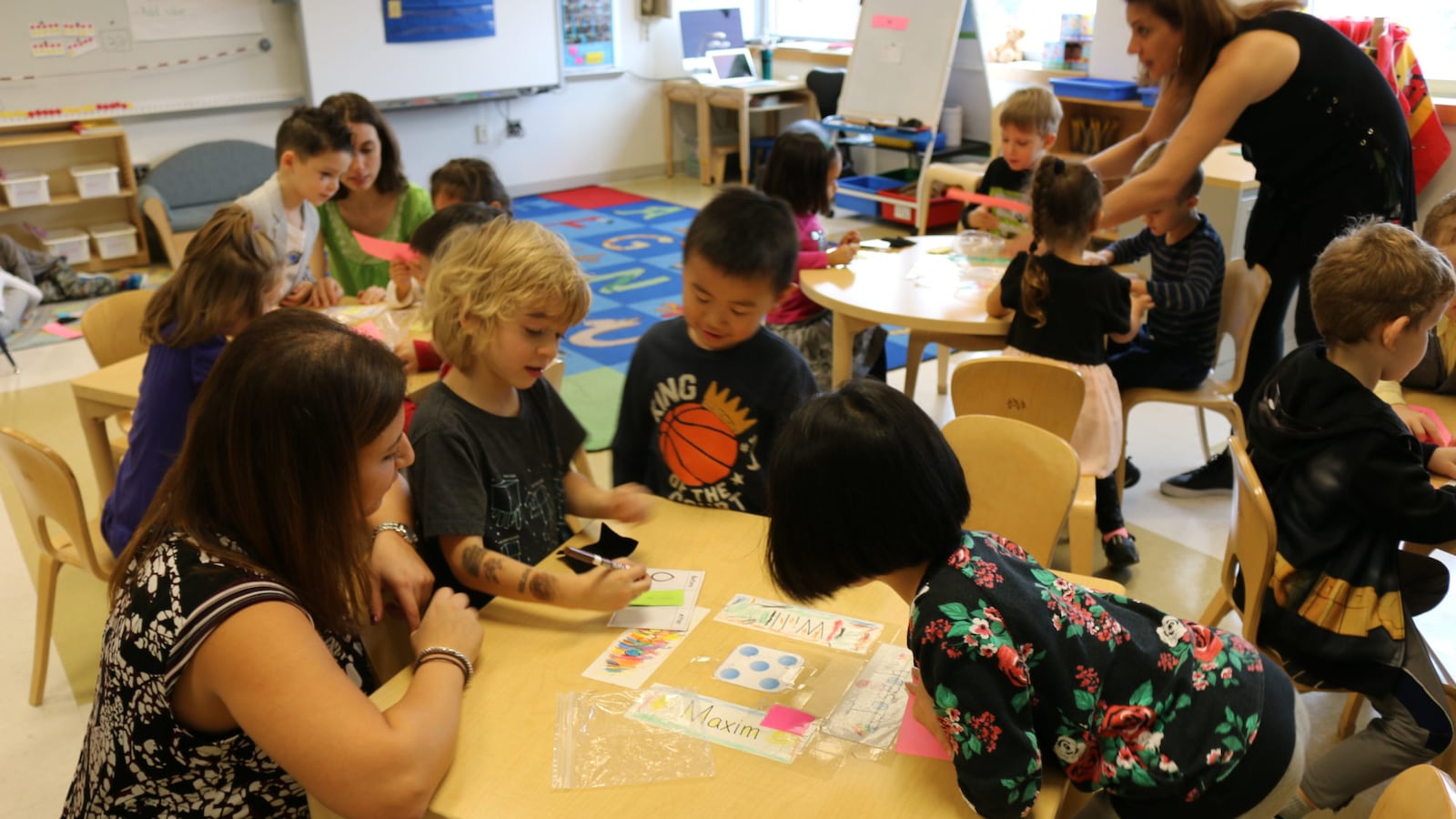Some of New York City’s starkly segregated gifted programs are showing promise when it comes to meeting new diversity goals, according to city numbers released Friday.
But those goals, and the scale of the city’s integration efforts, are still modest in the face of the glaring underrepresentation of students in gifted programs who are poor, of color, homeless, or learning English as a new language. One school, for example, was able to meet its target by offering six seats to poor students, out of 49 that were available.
Six gifted programs have joined the city’s Diversity in Admissions initiative, which allows schools to set-aside seats for needy students. All of the programs except one met their targets for admissions offers, according to new data. Though the students have been offered admission, it remains to be seen whether they will enroll.
“We are working to make gifted and talented programs more accessible for students and families across the city,” education department spokesman Doug Cohen said in an emailed statement.
Gifted enrollment is almost a reverse image of the city’s demographics: Black and Hispanic students make up only 27 percent of enrollment in gifted classes, but they comprise close to 70 percent of students citywide. Students are admitted based on test scores, which most take when they are about 4 years old.
Matt Gonzales, a school integration advocate with the nonprofit Appleseed, said that set-asides will do little to spur integration as long as the city sticks to its admissions test for gifted, which few children in poor districts take or do well on. He said it’s time to rethink whether the city should have separate gifted programs at all.
“There’s been over a decade of efforts to reform and to shift, to tinker,” he said. “None of those have ever really made a significant change.”
Some programs are starting their integration efforts small. P.S. 77 Lower Lab School set-aside 12 percent of kindergarten seats for students who qualify for free- or reduced-price lunch, a commonly used measure of poverty. That meant that six poor students were offered admission for next year. The Upper East Side school only enrolls gifted students from kindergarten to grade five, and fewer than 6 percent are poor. Out of more than 350 students, only a single one is black.
While schools like Lower Lab are aiming to cultivate a more diverse student body, others have used the Diversity in Admissions initiative to preserve it. That may be the case at TAG Young Scholars in Harlem, which set aside 40 percent of admissions offers for kindergarten students who qualify for free- or reduced-price lunch. As a citywide gifted school, TAG requires top test scores on the gifted test, and its enrollment of poor students has dipped in the last five years — from almost 53 percent poor students to about 39 percent. Out of 50 admissions offers, 20 went to poor students.
The only school that didn’t meet its goal was P.S. 15 Roberto Clemente, which is part of a districtwide effort on the Lower East Side to integrate elementary schools. The District 1 school is aiming to enroll a less needy student population, and offer 67 percent of seats to students who are poor, live in temporary housing, or are learning English — in line with the district average.
But all of the its offers for the gifted program in kindergarten went to students who meet those criteria.
Naomi Peña, a parent on the Community Education Council in District 1, said it has been a challenge to convince a wider range of parents to consider the school. It serves a disproportionate share of homeless students, but has recently posted impressive test score gains and has a loyal following of parents.
“It’s just getting parents to look at the school. It’s frustrating because it sits in a location near public housing, and people have these preconceived notions,” she said. “Once they go, they love it.”
Below is a breakdown of how many students applied to gifted programs in each district for next year.
Since the districts vary widely in size, we compared the number of applicants with the overall kindergarten enrollment in each district last year. That gives us an estimate of the share of students vying for gifted programs in each district. So, only 1 percent of all kindergartners applied for a gifted program in District 10 in the Bronx, but more than 17 percent of kindergartners applied for a gifted program in District 2, which spans Lower Manhattan and the Upper East Side.
An important caveat about these numbers: The share may be a little off, since they are based on last year’s kindergarten enrollment data. The education department expects fewer kindergartners to enroll in the next school year — but those figures aren’t available yet.
We also included the poverty rate of all students in each district to compare how participation in gifted programs varies based on a student’s likely economic status (a breakdown of poverty rate among only kindergarten students wasn’t readily available.) As you can see, many of the poorest districts have the fewest gifted applicants, while some of the most affluent have among the most applicants.
* The share of program applicants represents the percentage of kindergarten students in the district who applied to a gifted program.

